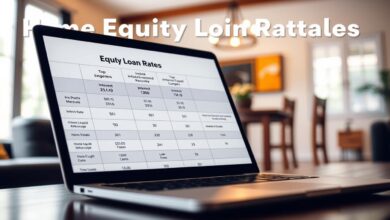Low Interest Personal Loans: Apply Now and Save
Welcome to your roadmap for smarter borrowing. Whether you’re consolidating debt or funding a big purchase, understanding your options helps you keep more money in your pocket. Today’s lenders offer flexible solutions that balance affordability with convenience.
Competitive rates start at 7.99% APR, with loan amounts reaching $50,000 for qualified applicants. Fixed monthly payments mean no surprises, and many providers skip origination fees entirely. This lets you focus on your goals instead of hidden costs.
Your credit profile plays a key role in securing favorable terms. Lenders typically review your history to determine eligibility, but even those rebuilding their score can find options. Quick approvals and next-day funding make these solutions ideal for timely needs.
Compared to credit cards, structured repayment plans create clearer financial paths. Shorter terms often mean paying less over time, while longer timelines offer budget-friendly installments. Either way, you’ll know exactly when you’ll be debt-free.
Key Takeaways
- APR ranges from 7.99% to 24.99% based on creditworthiness
- Borrow up to $50,000 with no collateral required
- Same-day decisions and fast funding available
- Fixed rates ensure consistent monthly payments
- No origination fees maximize your loan amount
Overview of Low Interest Personal Loans
Finding the right financial solution begins with clarity. Unsecured borrowing options provide funds for diverse needs while maintaining predictable payments. Let’s explore how these tools work and why they might fit your goals.
What Are They?
These financial products let you access money without risking assets like your car or home. Approval depends largely on your credit history and income, not physical collateral. Funds arrive as a lump sum, usable for everything from medical bills to home upgrades.
Unlike credit cards with variable rates, these options lock in your rate upfront. This stability helps plan budgets months or years ahead. Repayment terms typically range from 12 to 60 months, balancing flexibility with cost efficiency.
Key Benefits and Savings
Fixed monthly payments eliminate guesswork, while competitive rates reduce long-term costs. Consolidating high-rate debts into one payment often saves hundreds annually. Many lenders also skip origination fees, keeping more cash in your pocket.
Shorter terms mean faster debt freedom, while longer plans ease cash flow. Either way, you’ll know your exact payoff date. This transparency makes managing finances simpler and less stressful.
Key Features and Benefits of Personal Loans
Smart financial tools can transform how you manage expenses. Modern borrowing solutions combine affordability with speed, giving you control over timelines and budgets. Let’s explore what makes these options stand out.
Competitive Interest Rates
Leading providers offer APRs between 7.99% and 24.99%, with the most attractive rates going to borrowers with strong credit histories. Fixed-rate structures lock in your monthly payment, shielding you from market changes. This predictability helps plan long-term budgets confidently.
“Borrowers save an average of $1,200 annually when consolidating debt through fixed-rate options.”
No Fees and Quick Funding
Most lenders eliminate origination fees, ensuring you receive the full approved amount. Funds often arrive within one business day after approval. Flexible repayment windows (36-84 months) let you choose between aggressive payoff plans or extended timelines.
| Lender | APR Range | Funding Speed | Fees |
|---|---|---|---|
| PrimeChoice | 7.99% – 18.5% | Next-day | $0 origination |
| QuickFund | 9.25% – 22.8% | Same-day* | $0 prepayment |
| SecureLoan | 8.45% – 24.99% | 48 hours | $0 late fees |
Same-day decisions are standard across most platforms. You’ll know your approval status quickly, with no obligation to accept terms. Early repayment options let you save on interest without penalties if your situation improves.
Eligibility Criteria and Application Requirements
Securing funds starts with meeting basic qualifications. Lenders verify your ability to repay while protecting their interests. Let’s break down what you’ll need to prepare before hitting “submit” on your application.
Minimum Eligibility Requirements
All applicants must be legal U.S. residents aged 18+ with a valid Social Security Number. Lenders typically require proof of steady income – usually $25,000+ annually for individuals or households. This shows you can manage monthly payments without strain.
You’ll need a physical address (no P.O. boxes) and active email account. Digital access through a smartphone or computer is essential since most applications happen online. These requirements help lenders confirm your identity and maintain communication.
Gathering Required Documentation
Speed up the process by having these items ready:
- Government-issued ID (driver’s license or passport)
- Recent pay stubs or tax returns for income verification
- Utility bills or lease agreements for address confirmation
Lenders review your credit history through major bureaus like Experian and TransUnion. They’ll check payment patterns, existing debts, and recent credit inquiries. Tip: Dispute any errors on your credit report before applying to avoid unnecessary setbacks.
“Organized applicants complete the process 40% faster than those scrambling for documents.”
Understanding Loan Terms & Interest Rates
Navigating repayment plans requires knowing how terms shape costs. Your monthly payment and total expenses depend on two key elements: how long you borrow and the rate applied. Let’s break down these critical components.
How Loan Terms Affect Your Payment
Longer repayment periods spread costs over more months, reducing immediate strain. A $10,000 loan at 7.99% APR costs $313 monthly for 36 months. Stretch that to 60 months? Your payment drops to $203, but you’ll pay $800 extra in interest.
Shorter terms demand higher monthly commitments but slash total costs. This trade-off helps prioritize either cash flow management or overall savings. Always match your timeline to budget capabilities.
Factors Influencing Your Interest Rate
Lenders evaluate multiple elements when setting your rate. Top-tier credit scores (750+) often secure the best offers, while smaller loan amounts may carry slightly higher rates. Automatic payment enrollment typically triggers a 0.25% discount.
Home improvement projects sometimes qualify for better rates than general expenses. Pro tip: Request slightly more than needed if you’re near a lender’s pricing tier threshold. This could improve your rate structure.
“Borrowers who compare term-length scenarios save 19% more than those who don’t.”
Strategies for Debt Consolidation and Financial Solutions
Streamlining multiple debts into one manageable plan can transform your financial outlook. Consolidation strategies help simplify payments while potentially lowering costs, giving you clearer milestones toward becoming debt-free.
Using Loans to Consolidate Debt
Combining high-rate balances into a single fixed payment is like hitting a reset button on your finances. Credit cards often charge 20% APR or higher, while consolidation options frequently offer rates under 15%. This swap can slash interest costs and stop the cycle of minimum payments.
Structured repayment plans create built-in accountability. You’ll know exactly when your debt ends, unlike revolving credit lines that linger. Fixed monthly amounts also make budgeting easier – no guessing next month’s statement balance.
“Borrowers who consolidate credit card balances save an average of 18% in interest annually.”
Your credit health often improves when replacing maxed-out cards with installment debt. Lower credit utilization ratios boost scores, while fewer due dates reduce missed payment risks. Just remember: success requires avoiding new charges on cleared accounts.
Choose terms that match your cash flow while minimizing total interest. Shorter timelines (24-36 months) work best for aggressive payoff goals. Extended plans (60+ months) ease monthly strain but cost more over time.
Comparing Lender Options and Rates
Smart borrowers know that shopping around pays dividends. Lenders vary widely in their offers, making comparison essential for maximizing savings. Let’s explore how to evaluate your choices effectively.
Reviewing Offers from Leading Lenders
Major institutions like Discover and U.S. Bank offer APRs starting at 7.99%, but maximum rates differ significantly. Navy Federal Credit Union caps rates at 18% for military members, while others may charge up to 24.99%. These variations can mean $2,000+ differences in total interest over five years.
| Lender | APR Range | Unique Perks |
|---|---|---|
| Discover | 7.99%-24.99% | Free FICO scores |
| U.S. Bank | 7.99%-24.99% | Direct creditor payments |
| Navy Federal | 8.99%-18.00% | Military discounts |
Determining the Best Rate for You
Your existing banking relationships matter. Many institutions reward loyal customers with rate discounts or higher approval amounts. Check if your current bank offers prequalification – this lets you see potential terms without credit score impacts.
Look beyond the advertised rate. Some lenders charge 1-6% origination fees, while others maintain $0 fee policies. Repayment windows range from 36 months to seven years. Shorter terms save money, longer ones ease monthly budgets.
“Comparing three lenders typically reveals 12-15% rate differences for the same borrower profile.”
Credit unions often provide personalized service and lower maximum rates. Online lenders usually deliver faster decisions. Use these insights to match lender strengths with your priorities – whether that’s speed, flexibility, or total cost.
Personal Loan Use Cases: Home Improvement and More
Modern financing solutions unlock possibilities beyond basic needs. From renovating your living space to handling life’s surprises, these funds adapt to your priorities. Let’s explore how they empower smart spending across various scenarios.
Funding Home Renovations and Repairs
Kitchen upgrades and roof replacements top the list of popular projects. Unlike equity-based options, these solutions don’t require home appraisals or collateral. Funds arrive in days, letting you start repairs before small issues become costly disasters.
Bathroom remodels often yield 60-70% return on investment. Quick access to money helps capitalize on contractor availability and material sales. You’ll avoid draining emergency savings while increasing property value.
Covering Medical and Personal Expenses
Unexpected health needs can strain budgets. Dental implants or fertility treatments might cost $5,000-$25,000 upfront. Flexible repayment plans make these expenses manageable without insurance hurdles.
Life milestones like weddings or adoptions also benefit from structured financing. Pro tip: Compare lender offers for events with fixed costs – some provide specialized rate discounts.
Other Practical Applications
From education to emergencies, these solutions fill gaps traditional products miss. Need a reliable car for work? Replace high-rate credit card debt with predictable installments. Sudden appliance breakdown? Funds can arrive faster than insurance claims process.
| Use Case | Average Loan Amount | Common Term Length |
|---|---|---|
| Home Remodel | $15,000 | 48 months |
| Medical Bills | $8,500 | 36 months |
| Auto Repairs | $4,200 | 24 months |
“Borrowers using funds for home projects report 23% higher satisfaction rates than those financing discretionary purchases.”
Managing Your Credit Score for Loan Success
Your financial future hinges on understanding credit health. Lenders use this three-digit number to gauge reliability, shaping both approval odds and long-term costs. Let’s explore how to strengthen your position.
Why Your History Matters
Payment patterns and debt levels form your financial fingerprint. Institutions review how you’ve managed past obligations, including late payments or maxed-out cards. Recent applications for new credit can temporarily dip your score, so space out requests.
Boosting Your Financial Profile
Start by checking reports for errors – 1 in 5 contain inaccuracies. Set payment reminders to avoid missed deadlines, the #1 score killer. Keep credit card balances below 30% of limits to show restraint.
Some lenders offer free credit monitoring tools. Use these to track progress and spot fraud early. Over time, consistent habits rebuild trust with financial partners.








